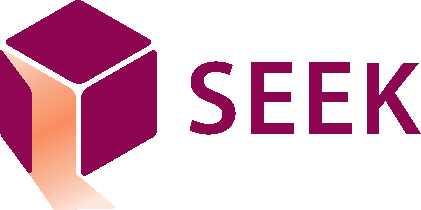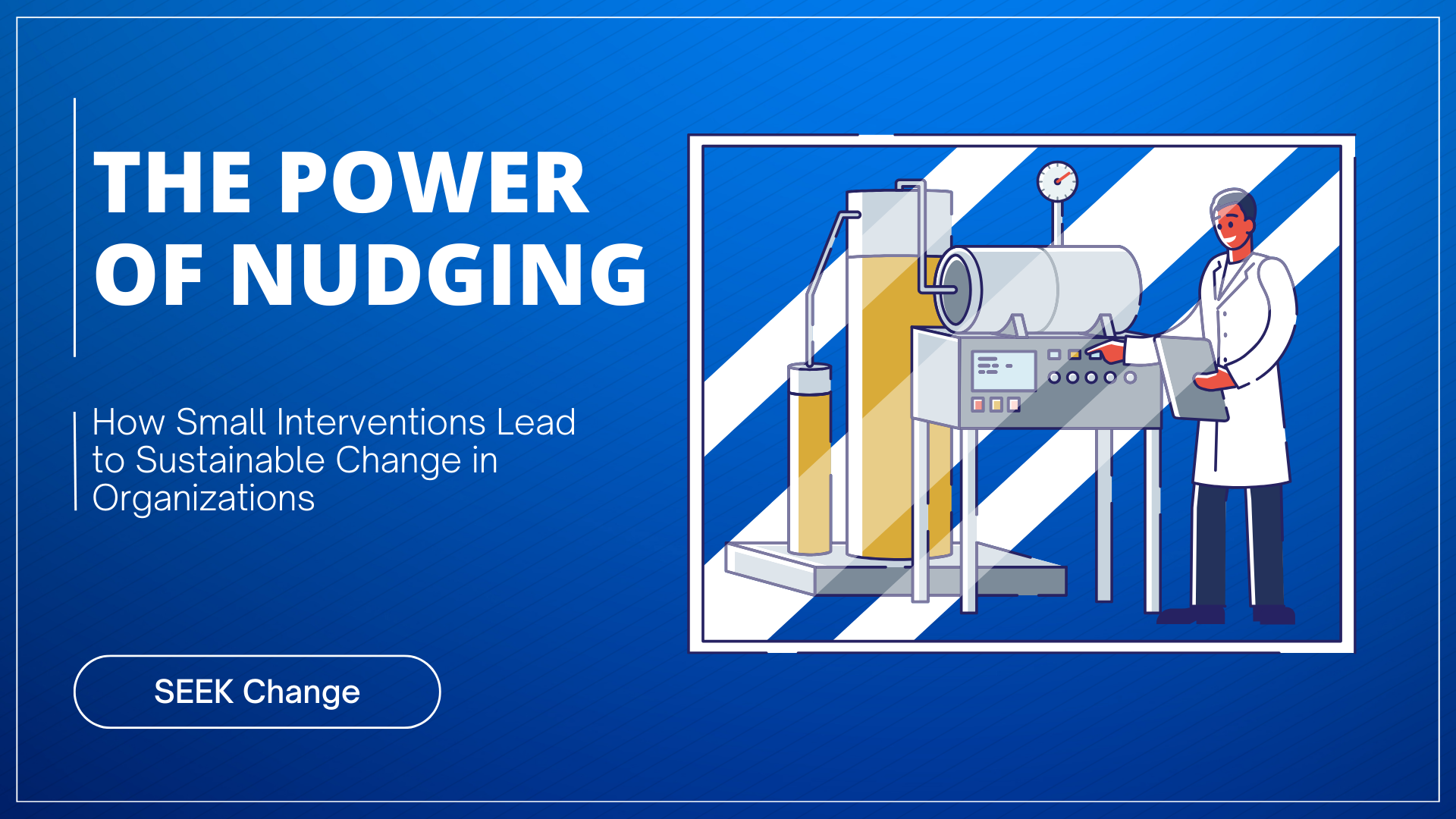In today’s rapidly evolving business environment, driving sustainable change in organizations can be a daunting challenge. Despite deploying the latest technologies and adopting new processes, many businesses struggle with costs associated with avoidable errors . This is because true transformation doesn’t happen with systems alone—it requires a change in employee behavior. One powerful way to achieve this is through behavioral nudging in the workplace, a concept rooted in behavioral science in business.
What is Behavioral Nudging?
Behavioral nudging is a technique that leverages small, subtle cues to influence people’s behavior without restricting their choices. It is based on the principles of behavioral science, which examines how individuals make decisions. By applying these insights to a business setting, leaders can guide employees toward better performance and engagement without using force or mandates.
For instance, a nudge might be as simple as sending reminders to employees to complete tasks, offering visual cues in the workspace, or using positive reinforcement to encourage compliance with organizational goals. These seemingly small interventions can lead to significant, sustainable organizational change when applied strategically.
How Behavioral Science Drives Employee Behavior
The core idea behind behavioral science in business is understanding why people act the way they do and how to influence those actions positively. In many organizations, employees are aware of what they should be doing but often struggle with execution due to distractions, forgetfulness, or lack of motivation. This is where nudging for organizational change becomes crucial.
By using behavioral nudging techniques, businesses can overcome these barriers and encourage employees to adopt new behaviors. Persuasive technology for employee behavior plays a key role in this, providing a framework to deliver timely nudges that help employees stay aligned with company goals and improve their overall performance.
The Role of Persuasive Technology in Employee Behavior
Persuasive technology refers to digital tools and systems designed to change human behavior through subtle encouragement. This technology is widely used in marketing and social media but is now gaining popularity in the corporate world as a way to influence employee behavior. AI-driven nudging platforms are prime examples of this technology in action.
An AI-driven nudging platform can continuously track employee interactions, provide personalized feedback, and offer real-time nudges. These platforms utilize persuasive technology to help employees stay engaged, complete tasks efficiently, and improve their decision-making processes. For businesses, this translates into better employee performance, increased productivity, and reduced costs.
Benefits of Nudging for Organizational Change
- Sustainable Change
Traditional change management techniques often focus on big, disruptive shifts that can overwhelm employees. In contrast, nudging for organizational change emphasizes small, incremental adjustments that lead to long-lasting results. By embedding nudges into daily workflows, companies can achieve sustainable change in organizations without causing resistance or burnout. - Improved Employee Engagement
Employee engagement is crucial to the success of any organization. Employee engagement through nudging helps create a more motivated workforce by offering regular, positive reinforcement. For example, nudges can remind employees to complete a task or recognize their achievements, fostering a culture of continuous improvement. - Better Performance
When employees receive the right nudge at the right time, they are more likely to stay on track and complete their tasks efficiently. Nudging employees for better performance is a low-cost, high-impact strategy that boosts productivity without the need for constant oversight or micromanagement. - Reduction in Human Error
In industries where human error can lead to costly mistakes, nudging is a valuable tool. By providing reminders and feedback in real time, businesses can reduce errors and improve compliance. AI-driven nudging platforms are particularly effective in high-stakes environments like healthcare and manufacturing, where attention to detail is critical.
Real-World Applications of Behavioral Nudging
Many organizations have successfully implemented behavioral nudging in the workplace to drive positive change. Here are a few examples:
- Increasing Compliance in Pharma: A leading pharmaceutical company used an AI-driven nudging platform to remind employees of standard operating procedures (SOPs) and offer positive feedback when tasks were completed correctly. This led to a 40% reduction in human errors and a significant improvement in compliance.
- Boosting Productivity in Retail: A retail chain introduced nudges to help employees prioritize tasks and manage their time more effectively. This resulted in a 20% increase in overall productivity and a higher level of employee engagement.
- Enhancing Employee Wellness: In a corporate wellness program, nudges were used to encourage employees to adopt healthier lifestyles. Simple nudges, such as offering healthier snacks and sending reminders to take breaks, led to a 30% increase in wellness program participation.
How SEEK Leverages Persuasive Technology for Employee Behavior
One company at the forefront of using persuasive technology for employee behavior is SEEK. Through its AI-powered platform, SEEK helps businesses drive sustainable change in organizations by aligning employees with company goals using behavioral science and nudging techniques. By continuously interacting with employees and offering personalized nudges, SEEK has achieved remarkable success in improving performance and reducing human errors.
For example, in the pharmaceutical industry, SEEK’s platform helped reduce human error by 60%, increase efficiency by 40%, and save companies millions in compliance-related costs. By focusing on small, daily nudges tailored to individual employees, SEEK ensures that behavior change is not only achieved but sustained over time.
Conclusion: Small Nudges, Big Impact
In the pursuit of sustainable organizational change, the power of small interventions cannot be overstated. Nudging employees for better performance through behavioral nudging in the workplace is a proven, cost-effective way to drive lasting change. By incorporating persuasive technology and AI-driven nudging platforms, businesses can foster a culture of continuous improvement and employee engagement.As we look to the future of business transformation, it’s clear that the key to success lies not in drastic overhauls but in the power of small, strategic nudges. For organizations ready to unlock the full potential of their workforce, embracing behavioral science in business and persuasive technology is the path forward.

